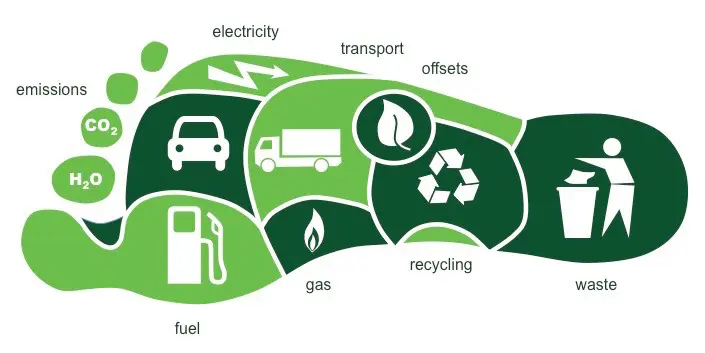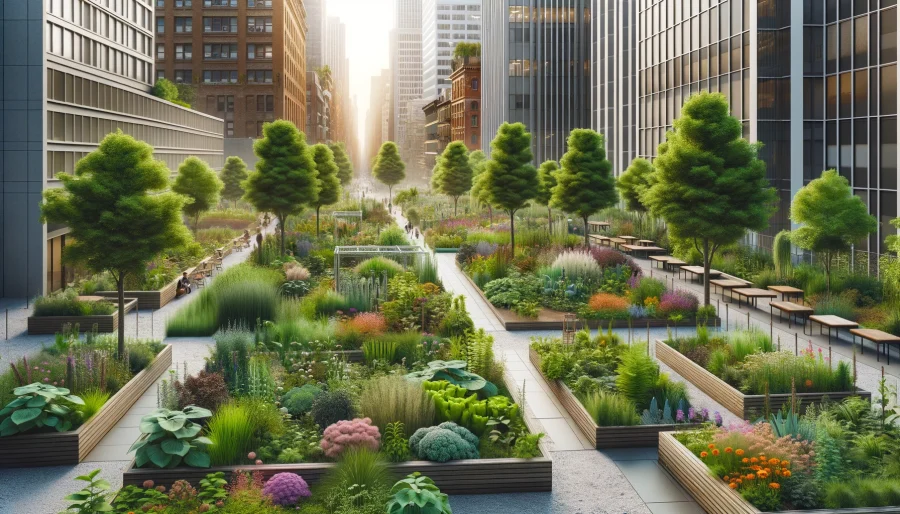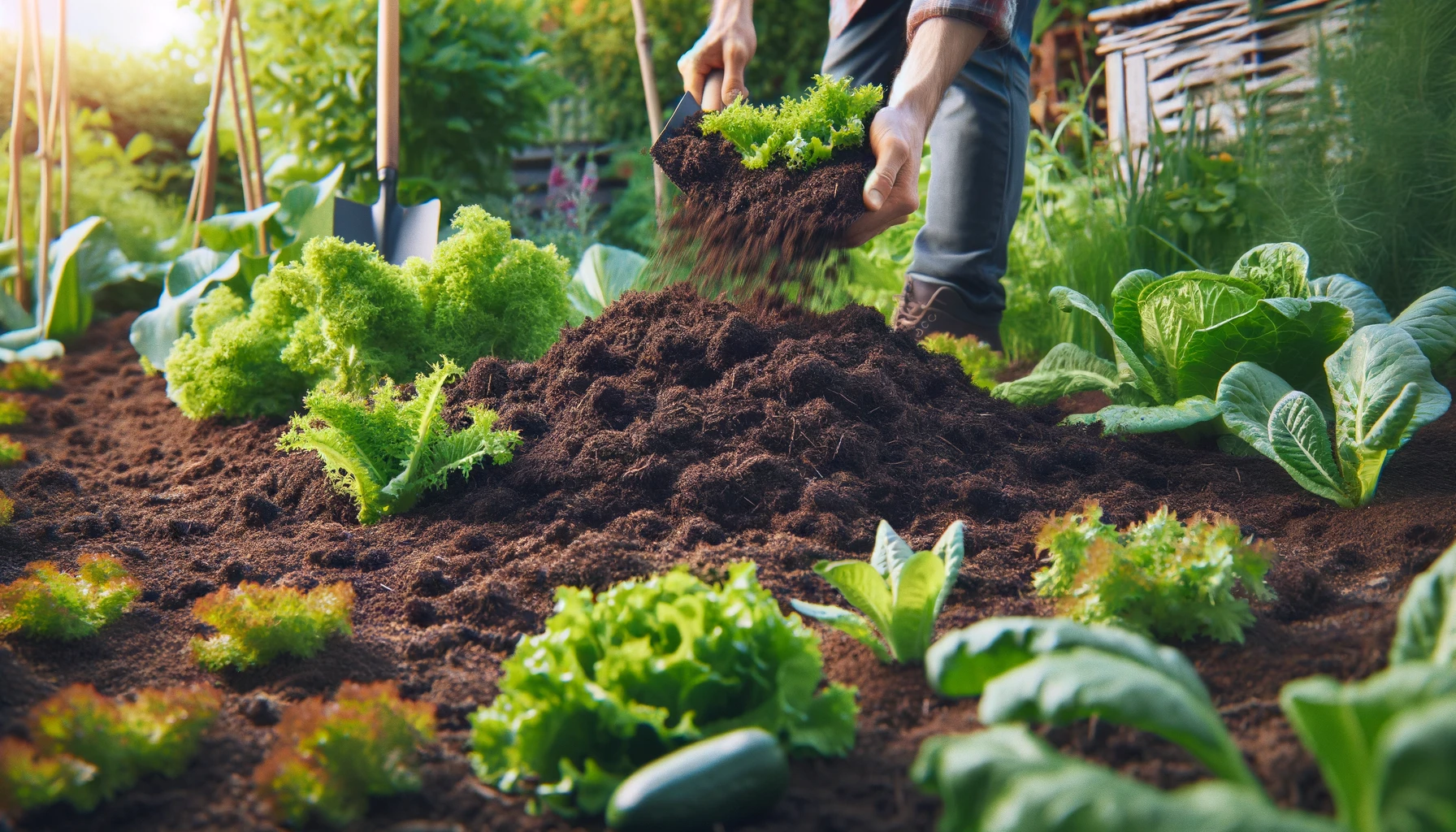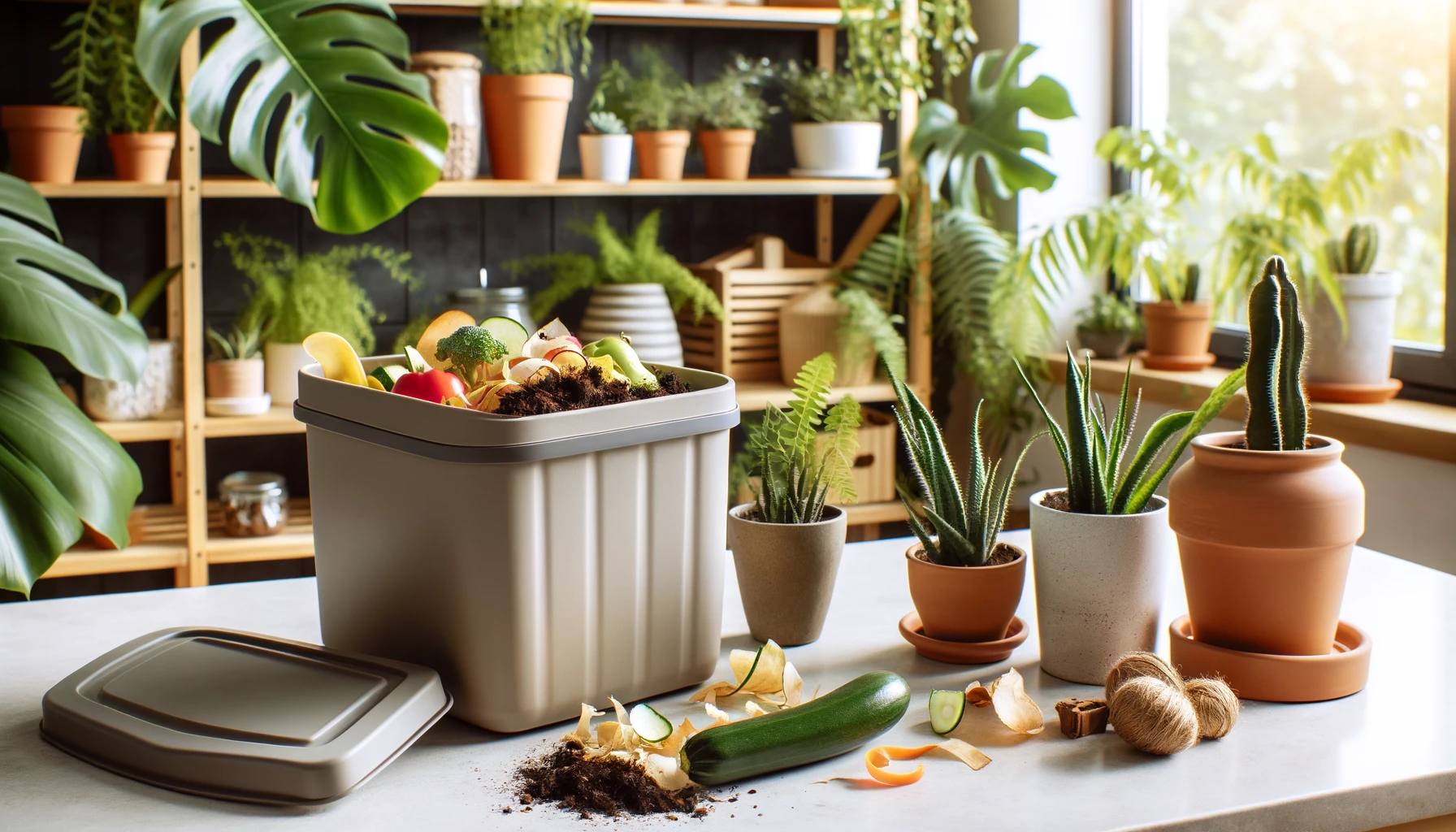This post contains affiliate links. If you buy something from one of our links we may earn a commission. Thanks

Discover how gardening reduces carbon footprint and contributes to a greener planet. Learn sustainable practices for eco-friendly gardening and its impact on climate change.
Key Takeaways:
- Gardening reduces carbon footprint by: sequestering carbon dioxide, minimizing the need for synthetic fertilizers, and reducing the carbon emissions associated with food transportation.
- By adopting eco-friendly practices like composting, using native plants, and minimizing water usage, gardeners can significantly lower their environmental impact and contribute to a healthier planet.
Does gardening reduce carbon footprint? Absolutely! Gardening is not just a hobby; it’s a powerful tool in the fight against climate change.
By cultivating plants, we can sequester carbon dioxide, reduce reliance on industrial agriculture, and create a sustainable environment right in our backyards.
Let’s dig into how gardening can make a real difference in reducing our carbon footprint.
How Does Gardening Reduce Carbon Footprint?

Gardening is more than just a hobby; it’s a way to make a positive impact on the environment.
One key aspect is its effect on our carbon footprint, which measures the total greenhouse gas emissions caused by our activities.
Gardening, especially when done indoors, can significantly reduce these emissions.
This post will explore the relationship between gardening and carbon emissions, and how you can create a low-carbon indoor garden.
Understanding Carbon Footprint in Gardening
The carbon footprint is a measure of the greenhouse gas emissions produced by our activities, including gardening.
Traditional gardening practices can contribute to carbon emissions through the use of synthetic fertilizers, pesticides, and energy-intensive lighting.
However, gardening, especially indoor gardening, offers an opportunity to reduce this impact by adopting eco-friendly practices.
Reducing Carbon Emissions with Indoor Gardening
Indoor gardening can help reduce carbon emissions in several ways.
By growing your own herbs, vegetables, and fruits, you can decrease your reliance on commercially grown produce, which often involves carbon-intensive transportation.
Utilizing natural light and energy-efficient grow lights can also lower energy consumption.
Additionally, composting organic waste and using it as fertilizer reduces methane emissions from landfills.
How Does Gardening Reduce Carbon Footprint

Gardening is a powerful way to reduce your carbon footprint.
Through carbon sequestration, reducing food miles, and promoting sustainable practices, gardens can have a significant positive impact on the environment.
This section explores how gardening practices contribute to lowering greenhouse gas emissions and combating climate change.
Sequestering Carbon Dioxide
Plants play a crucial role in sequestering carbon dioxide (CO2) from the atmosphere.
Through the process of photosynthesis, they absorb CO2 and release oxygen, helping to mitigate the effects of climate change.
By maintaining a garden, you’re essentially creating a natural carbon sink that contributes to reducing the overall carbon levels in the atmosphere.
Reducing Food Miles
Growing your own food has a direct impact on reducing the carbon footprint associated with food transportation and packaging.
Store-bought produce often travels long distances from farms to supermarkets, emitting greenhouse gases during transportation.
By cultivating your own herbs, vegetables, and fruits, you’re cutting down on these food miles and the associated carbon emissions.
Additionally, homegrown food requires less packaging, further reducing waste and carbon output.
How Does Gardening Help Climate Change?
Gardening is not just a pastime; it’s a powerful tool in the fight against climate change.
By fostering plant growth, we can sequester carbon dioxide, reduce urban heat islands, and improve air quality.
This section explores the multifaceted ways in which gardening contributes to a healthier planet.
Reducing Urban Heat Islands
Heat islands are urbanized areas that experience higher temperatures than outlying areas. Structures such as buildings, roads, and other infrastructure absorb and re-emit the sun’s heat more than natural landscapes such as forests and water bodies. Urban areas, where these structures are highly concentrated and greenery is limited, become “islands” of higher temperatures relative to outlying areas. Daytime temperatures in urban areas are about 1–7°F higher than temperatures in outlying areas and nighttime temperatures are about 2-5°F higher. EPA
Role of Green Spaces

Gardens and green spaces play a crucial role in reducing urban temperatures.
By providing shade and releasing moisture into the air through transpiration, plants help cool the surrounding environment.
This effect is especially important in cities, where concrete and asphalt absorb and retain heat, leading to higher temperatures.
By increasing greenery, we can create cooler, more comfortable urban spaces and reduce the urban heat island effect.
Energy Savings
The cooling effect of gardens and green spaces leads to significant energy savings.
When temperatures are lower, there’s less need for air conditioning in nearby buildings, resulting in reduced energy consumption and lower greenhouse gas emissions.
This not only helps combat climate change but also lowers energy costs for residents and businesses.
Incorporating more plants into urban areas is a cost-effective way to improve energy efficiency and sustainability.
Enhancing Air Quality
Pollution Absorption
Plants are natural air purifiers. They absorb pollutants such as nitrogen dioxide, sulfur dioxide, and particulate matter through their leaves and roots.
Certain indoor plants like peace lilies, snake plants, and spider plants are especially effective at filtering out toxins and improving air quality.
By integrating more plants into indoor and outdoor spaces, we can reduce pollution levels and create healthier environments.
Oxygen Production
Plants are essential for oxygen production. Through photosynthesis, they convert carbon dioxide into oxygen, providing us with the air we need to breathe.
This process is vital for maintaining a balanced ecosystem and ensuring clean air.
The more plants we have, the more oxygen is produced, leading to improved air quality and overall well-being.
How to Reduce Carbon Footprint in Gardening
Reducing your carbon footprint in gardening involves adopting eco-friendly practices that minimize the environmental impact of your gardening activities.
Here are some specific tips to help you achieve a more sustainable garden:
Use Peat-Free Potting Soils
Peatlands are important carbon sinks, and harvesting peat releases stored carbon into the atmosphere.
Opt for peat-free potting mixes made from renewable resources like coconut coir, compost, or bark to reduce your garden’s carbon footprint.
Minimize Synthetic Fertilizers
Synthetic fertilizers are energy-intensive to produce and can contribute to greenhouse gas emissions.
Instead, use organic fertilizers such as compost, manure, or worm castings, which are not only better for the environment but also improve soil health.
Choose Native Plants
Native plants are adapted to your local climate and require less water, fertilizer, and maintenance than non-native species.
By planting native flora, you can reduce the need for irrigation and chemical inputs, further lowering your garden’s carbon impact.
Implement Water-Saving Techniques
Overwatering not only wastes water but also increases energy consumption if you’re using pumped irrigation.
Implement water-saving techniques such as drip irrigation, mulching, and rainwater harvesting to reduce water use and energy consumption.
Practice No-Till Gardening
Tilling the soil releases stored carbon into the atmosphere.
Adopt no-till gardening methods to preserve soil structure, maintain carbon sequestration, and reduce the need for mechanical tools that consume fossil fuels.
Use Renewable Energy Sources
If you use lighting or heating in your indoor garden, consider switching to renewable energy sources such as solar or wind power.
This can significantly reduce the carbon emissions associated with your gardening activities.
Carbon Footprint of Homegrown Food
The carbon footprint of homegrown food is generally lower than that of commercially produced food. Here’s why:
Reduced Transportation Emissions
Commercially produced food often travels long distances from farms to processing facilities, distribution centers, and finally to retail stores.
This transportation process, known as food miles, generates significant carbon emissions.
In contrast, homegrown food has virtually zero food miles, as it goes directly from your garden to your table.
Minimal Packaging
Commercial food products are typically packaged in plastic or other materials for transportation and display, contributing to waste and carbon emissions.
Homegrown food requires no packaging, reducing waste and the carbon footprint associated with packaging production and disposal.
Lower Energy Consumption
Large-scale commercial agriculture often relies on energy-intensive machinery for planting, harvesting, and processing.
Home gardening usually involves manual labor and simple tools, resulting in lower energy consumption and fewer emissions.
Chemical Reduction
Commercial farming frequently uses synthetic fertilizers and pesticides, the production and application of which contribute to greenhouse gas emissions.
Growing food at home allows for more organic practices, reducing the reliance on these chemicals and their associated carbon footprint.
For a detailed comparison of the carbon footprint of homegrown versus commercially produced food, you can refer to the University of California Agriculture and Natural Resources (UCANR) publication on home gardening and climate change and the Rodale Institute’s research on organic farming and carbon sequestration.
How Does Gardening Help the Environment?
Gardening offers a multitude of environmental benefits beyond just reducing carbon emissions. Here’s how:
Promoting Biodiversity
Gardens can provide habitats for a wide range of flora and fauna, from birds and insects to various plant species.
By planting a variety of plants, gardeners can create a diverse ecosystem that supports local wildlife and contributes to overall biodiversity.
Improving Soil Health
Gardening practices such as composting and using organic matter can enhance soil fertility and structure.
Healthy soil is crucial for plant growth and acts as a carbon sink, sequestering carbon dioxide from the atmosphere.
Reducing Chemical Use
Organic gardening reduces the need for synthetic fertilizers and pesticides, which can harm the environment.
By using natural pest control methods and organic fertilizers, gardeners can minimize their impact on the ecosystem.
Enhancing Water Quality
Gardens can help filter rainwater and reduce runoff, preventing pollutants from entering waterways. By using sustainable watering practices, gardeners can also conserve water and reduce their environmental footprint.
For more information on the environmental benefits of gardening, you can visit the Vizcaya Museum and Gardens’ guide to sustainable gardening and the National Wildlife Federation tips for creating wildlife-friendly gardens.
How Does Growing Your Own Food Help Climate Change?
Growing your own food can contribute to climate change mitigation by reducing the demand for industrially produced food and the associated emissions. Here’s how:
- Reducing Food Miles: Home gardening reduces the need for transportation, which is a significant source of greenhouse gas emissions. By growing your own food, you decrease the carbon footprint associated with the transportation of food from farms to stores and then to your home.
- Lowering Packaging Waste: Homegrown food requires less packaging compared to store-bought produce, which often comes in plastic containers or wraps. Reducing packaging waste also reduces the carbon footprint associated with the production and disposal of packaging materials.
- Improving Soil Health: Healthy soil is a vital component of a climate-friendly garden. Practices like composting and using organic matter can increase soil carbon, enhancing its ability to sequester carbon dioxide from the atmosphere.
- Promoting Biodiversity: Diverse gardens with a variety of plants can support a wide range of insects and wildlife, contributing to a balanced ecosystem that can better withstand and adapt to climate changes.
By adopting these practices, home gardeners can make a positive impact on the environment and help mitigate climate change.
For more information on how gardening can contribute to climate change mitigation, you can visit UC Marin Master Gardeners’ Climate Change Mitigation page and their article on Putting Carbon Back In Your Soil.
How Does Gardening Reduce Carbon Footprint? FAQs
Gardening is a powerful tool in the fight against climate change. In this FAQ section, we’ll address common questions about how gardening activities can help reduce carbon emissions and contribute to a healthier planet.
From the role of indoor gardens to the benefits of growing your own food, discover how your green thumb can make a difference.
Q: How does gardening reduce carbon footprint?
A: Gardening reduces carbon footprint by sequestering carbon dioxide through plant growth, reducing the need for synthetic fertilizers and pesticides, and minimizing the carbon emissions associated with food transportation and packaging.
Growing your own food, planting trees and shrubs, and using sustainable gardening practices all contribute to a lower carbon footprint (Source: Washington State University Extension).
Q: Is indoor gardening good for the environment?
A: Yes, indoor gardening is good for the environment as it can help reduce carbon emissions by growing your own food, using energy-efficient grow lights, and composting organic waste. It also improves air quality and supports biodiversity (Source: University of Maryland Extension).
Q: Do houseplants reduce carbon footprint?
A: Houseplants can help reduce carbon footprint by absorbing carbon dioxide and releasing oxygen. They also improve indoor air quality by filtering pollutants, which can lead to reduced energy consumption for air purification.
Q: How do home gardens help the environment?
A: Home gardens help the environment by promoting biodiversity, improving soil health, and reducing the need for chemical fertilizers and pesticides. They also provide habitat for pollinators and other beneficial insects and can help mitigate climate change by sequestering carbon.
Q: What are 3 benefits of gardening at home?
A: Three benefits of gardening at home include:
- Fresh, healthy produce: Homegrown fruits and vegetables are fresher and often more nutritious than store-bought options.
- Physical and mental health: Gardening provides physical exercise and can reduce stress, improving overall well-being.
- Environmental impact: Gardening at home reduces the carbon footprint associated with food transportation and packaging, and supports biodiversity and soil health.
Q: How does gardening help climate change?
A: Gardening helps combat climate change by sequestering carbon dioxide, reducing the urban heat island effect, enhancing air quality, and promoting sustainable food production.
By adopting climate-friendly gardening practices, gardeners can contribute to mitigating the impacts of climate change.
How Does Gardening Reduce Carbon Footprint? Conclusion
In this post, we’ve explored the significant role that gardening plays in reducing our carbon footprint and combating climate change. Here are the key takeaways:
The Impact of Gardening
Gardening, particularly indoor gardening, is a powerful tool for sustainability.
It helps sequester carbon dioxide, reduces the carbon emissions associated with food transportation, and promotes biodiversity.
Sustainable Practices
Adopting eco-friendly gardening practices, such as using peat-free potting soils, minimizing synthetic fertilizers, and choosing native plants, can further enhance the positive impact of gardening on the environment.
Read more: Eco-Friendly Gardening
Benefits Beyond Carbon Reduction
Gardening also offers numerous other environmental benefits, including improving air quality, enhancing soil health, and supporting local ecosystems.
We encourage all gardeners, whether novices or experts, to embrace sustainable gardening practices.
By doing so, you can reduce your carbon footprint, contribute to a healthier planet, and enjoy the many rewards of nurturing a garden.
Resources
Here are some useful resources to further explore the topics discussed in the post:
- Reducing Carbon Footprint with Gardening:
- Gardeners Guide to Global Warming: Read more
- Sustainable Gardening Practices:
- Environmental Benefits of Gardening:
These resources provide valuable information and tips for gardeners looking to reduce their carbon footprint and contribute positively to the environment through sustainable gardening practices.







